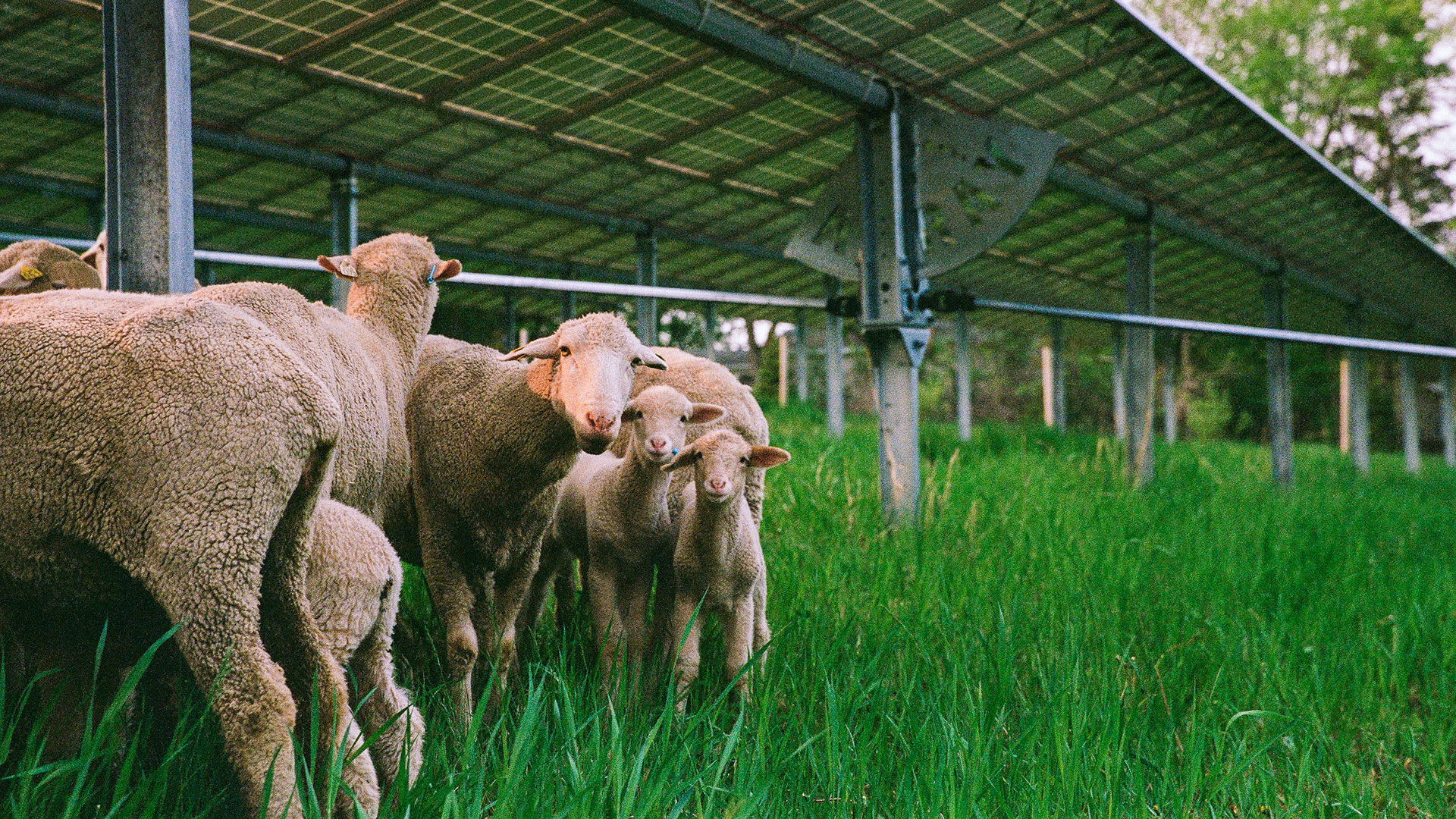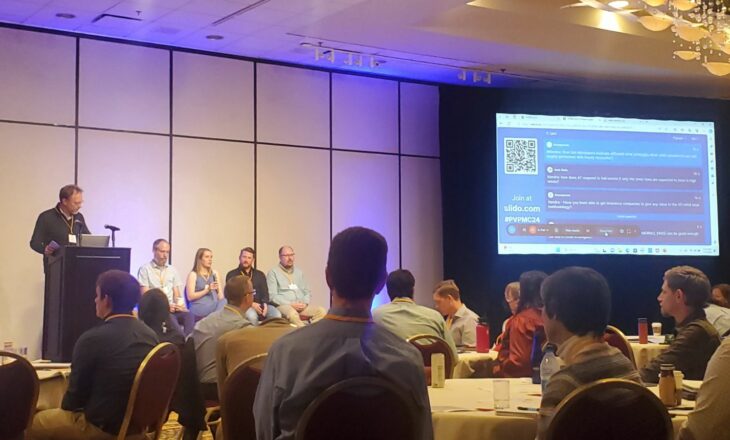
Solar power, one of the fastest-growing renewable energies in America—and abroad—has been a subject of much debate, with misinformation campaigns creating a cloud of confusion.
So, let’s debunk the most common myths about solar farms and illuminate their true potential—a potential that is not just about sustainability but also about advancing our societies in more ways than one.
We’re answering these six common solar farm myths:
- Do solar farms take land away from farmers?
- Do utility-scale solar projects have poor water management?
- Will solar power create enough jobs?
- Are utility-scale solar farms ugly to look at?
- Do solar farms produce “toxic” waste?
- Does manufacturing the parts needed for solar power create Co2 emissions?
1. Do solar farms take land away from farmers?
Myth: “Solar farms would take up large tracts of land needed for crop production”
Reality: Advancements in solar technology have made it possible to build solar arrays on variable terrains and have reduced the need for land traditionally used for farming.
Notably, a recent pv Magazine article, shared that solar panels occupying just 1% of the land currently used for agriculture—or 0.5 million square kilometers—could power the entire Earth’s energy needs. Put another way, that would be like covering roughly 91% of France in solar panels.
Even more intriguing is the concept of agrivoltaics. By integrating solar panels with agricultural land, farms can actually increase their efficiency, benefiting both food production and energy generation. In other words, the same piece of land can produce food for our tables and energy for our homes—a revolutionary approach to resource optimization.
2. Do utility-scale solar projects have poor water management?
Myth: “Utility-scale solar projects have poor water management”
Reality: With proper care, planning, and innovative technology and strategies, knowledgeable project leaders have greatly mitigated these issues, paving the way for responsible water management.
While there have been issues with water management at a few—four out of the nearly one million solar sites built between 2021-2022—these appear to result from negligence or lack of an understanding of the landscape.
Grading the land for solar farms has been likened to typical road construction projects by experts like Annick Anctil, an assistant professor of civil and environmental engineering at Michigan State University, who notes that the runoff from building those four solar farms could have been avoided by careful planning and consideration.
The process of leveling land can be troublesome if not managed properly. However, innovative technology like Array’s OmniTrack™ is specifically designed to tackle these challenges by requiring less leveling of the land. Add in mitigation strategies like planting appropriate ground cover and conducting proper hydrology studies, and modern solar projects can preserve the integrity of the surrounding environment.
These insights underscore the difference between responsible solar construction and those projects where lack of care has led to problems. Array stands as an example of how solar energy can be harnessed responsibly, bridging innovation and environmental stewardship and lighting the way for sustainable solar energy developments.
3. Will solar power create enough jobs?
Myth: “Solar power does not create enough jobs”
Reality: The solar power industry is a job creator and driver of economic growth.
Shifting towards cleaner energy technologies isn’t just about protecting our planet—it’s a substantial opportunity for job growth. Solar farms provide construction, maintenance, and cleaning jobs throughout their lifetime as well as other skilled jobs in many associated industries.
The International Energy Agency’s (IEA) report “Net Zero by 2050: A Roadmap for the Global Energy Sector (NZE Scenario)” forecasts the creation of 14 million new jobs in the clean energy sector.
Moreover, this isn’t a story of job loss but of job transformation, with approximately 5 million workers expected to transition from traditional fossil fuel sectors. An additional 16 million workers will have the opportunity to learn new skills and move into emerging clean energy segments. Renewable energy offers a dynamic, resilient, and future-proof job market teeming with opportunities for growth and advancement. With solar and other renewable technologies, we’re not just building a greener future but also a brighter future for employment.
4. Are utility-scale solar farms ugly to look at?
Myth: “Solar farms are an eyesore”
Reality: Solar farms are designed to be as unobtrusive as possible, offering an eco-friendly energy solution without compromising natural beauty. Unlike other energy plants or sites, utility-scale solar fields are mounted low to the ground and are less likely to interfere with the view of the horizon.
Newer solar farms feature solar panels that are designed and coated to reduce glare and even incorporate landscaping elements that enhance their surroundings, thus contributing positively to local aesthetics. This innovative approach is transforming perceptions and proving that renewable energy and natural beauty can coexist harmoniously.
And no, utility-scale solar energy farms will not severely decrease property values for surrounding homes. In fact, in the largest study of its kind, researchers looked at 1.8 million property transactions near solar farms in six states and found no drop in property values for homes more than a mile from the installation. Homes within a quarter-mile of some utility-scale solar farms saw a modest average property value decrease of 2.3%, still much smaller than the negative effects for homes located near places like landfills, fossil fuel plants, and highways.
5. Do solar farms produce “toxic” waste?
Myth: “Solar produces ‘toxic’ waste.”
Reality: Solar panels contain recyclable materials—and valuable components like silver and silicon—which can be separated and purified during the recycling process promoting a circular economy.
As the industry grows, companies that specialize in solar recycling are already starting to emerge. Which in turn will help mitigate waste and open up a new sector of green jobs, contributing to economic growth while protecting the environment.
6. Does manufacturing the parts needed for solar power create Co2 emissions?
Myth: “Solar power creates emissions from component manufacturing”
Reality: Solar power has a smaller greenhouse gas (GHG) footprint than other competing energy sources.
Although no energy creation method is entirely carbon-free—yet—solar power is one of the most advanced in this category and associated emissions are decreasing over time. Even considering carbon capture, the lifetime carbon footprint of solar power is far lower than coal- or gas-fired power generation.
As the U.S. and other countries expand their solar manufacturing, fewer panels will be imported from countries that rely on coal-fired plants. This means reducing both logistics costs and carbon emissions—an impressive double win.
Solar power is not just the future—it’s the present.
Click here for other articles by this author




